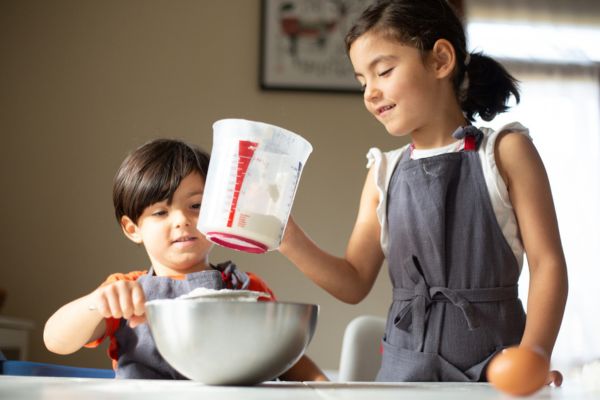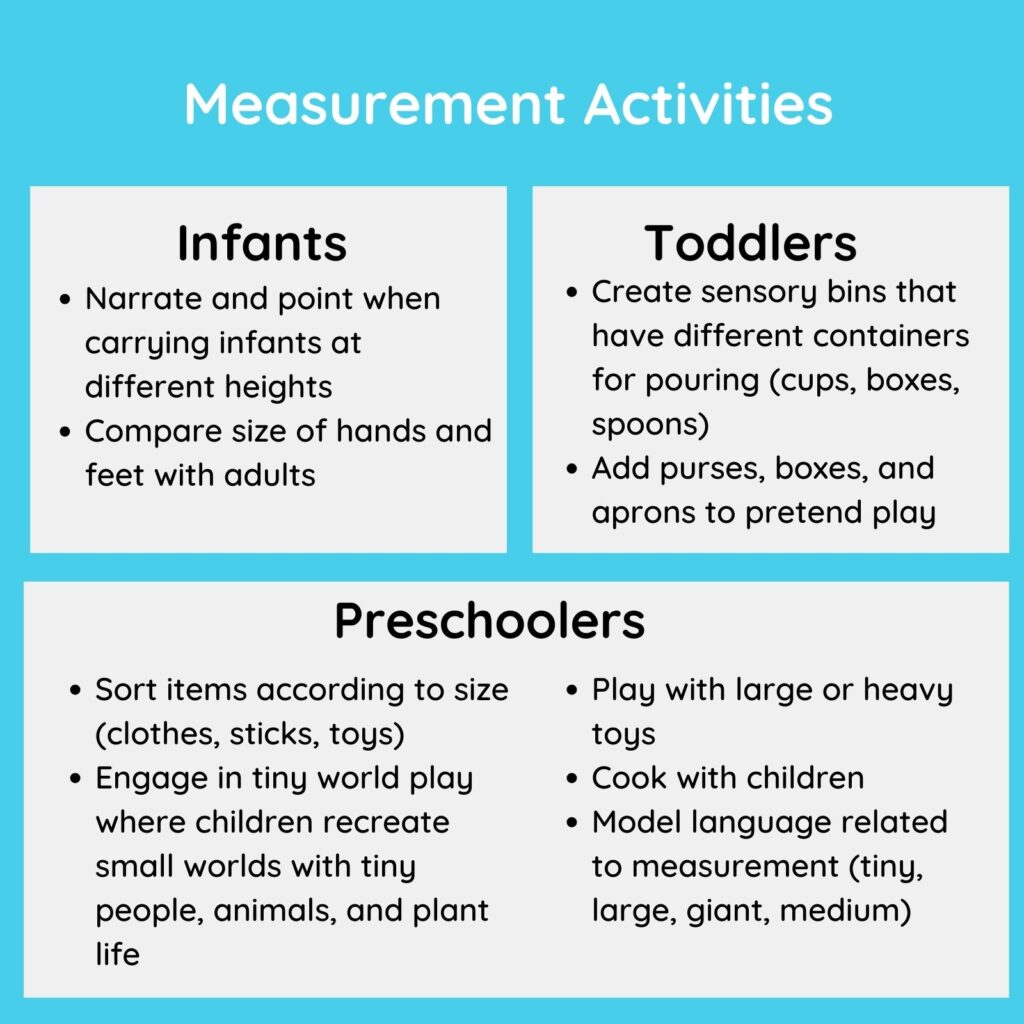
There are many things that we measure as part of everyday life. We calculate distance, height, weight, volume, and time as we cook, build, race, travel, grow, and more. Measurement is a mathematical concept that is useful when it is connected to real life, and that is what makes learning meaningful for children. From birth to five years of age, caregivers can provide children with experiences that will allow them to have a deep understanding of the physical properties of the world, build language to describe the world around them, and understand why measurement is useful. Children will learn more about specific units of measurement (inches, pounds, minutes) in school, so in early childhood the most important task is to introduce measurement through playful materials, narratives, and experiences. We will unpack what this looks like in the paragraphs below!
From infancy, children develop the awareness of measurement through bonding, as they place their tiny hand in yours or reach their little arms up to view the world from your height. Caregivers can point and narrate where they see infants looking through a large window at a small butterfly landing on a flower. Toddlers love to measure, especially when it comes to sensory materials—they pour buckets of water, fill cups of rice, dump laundry out of baskets, and hide materials in pockets, purses, and bags. This is their way of exploring measurement, as they observe where materials overflow or fit just perfectly. Caregivers can make sure to plan a week full of fun sensory experiences, which are full of opportunities for measurement!
As toddlers and preschool aged children develop language, they then learn how to describe the sizes of different objects. They might first just describe things as big and small, but as their language develops, caregivers can model rich vocabulary to describe things that are tiny, small, medium, large, huge, gigantic, gargantuan, or so small that they are invisible (like germs!). Children might use this language when creating a tiny house for fairies, building a giant tower of blocks, narrating Goldilocks and the Three Bears or carrying heavy buckets of water in the garden.
At Rayz Kidz, we believe that young children’s learning is interconnected, which means they can learn many things at once through play. For example, caregivers can talk with children about their own growth and how they develop skills and abilities over time, learn from others, and share their wisdom with younger siblings or friends. In this case, children’s physical growth is paired with their social and emotional learning, when they reflect on the ways they help or learn from others. Another great application for measurement is in cooking, as we might know too well the disasters possible when we bake a cake for too little or too long, or mix up the proportions for salt and sugar. Here, measurement is not only mathematical but also cognitive, as it is closely related to problem solving. In the Rayz Kidz app we include weekly activities that are developmentally appropriate and teach caregivers all about the ways that children’s learning is interconnected. Download the app and follow our play prompts to learn as you go!
